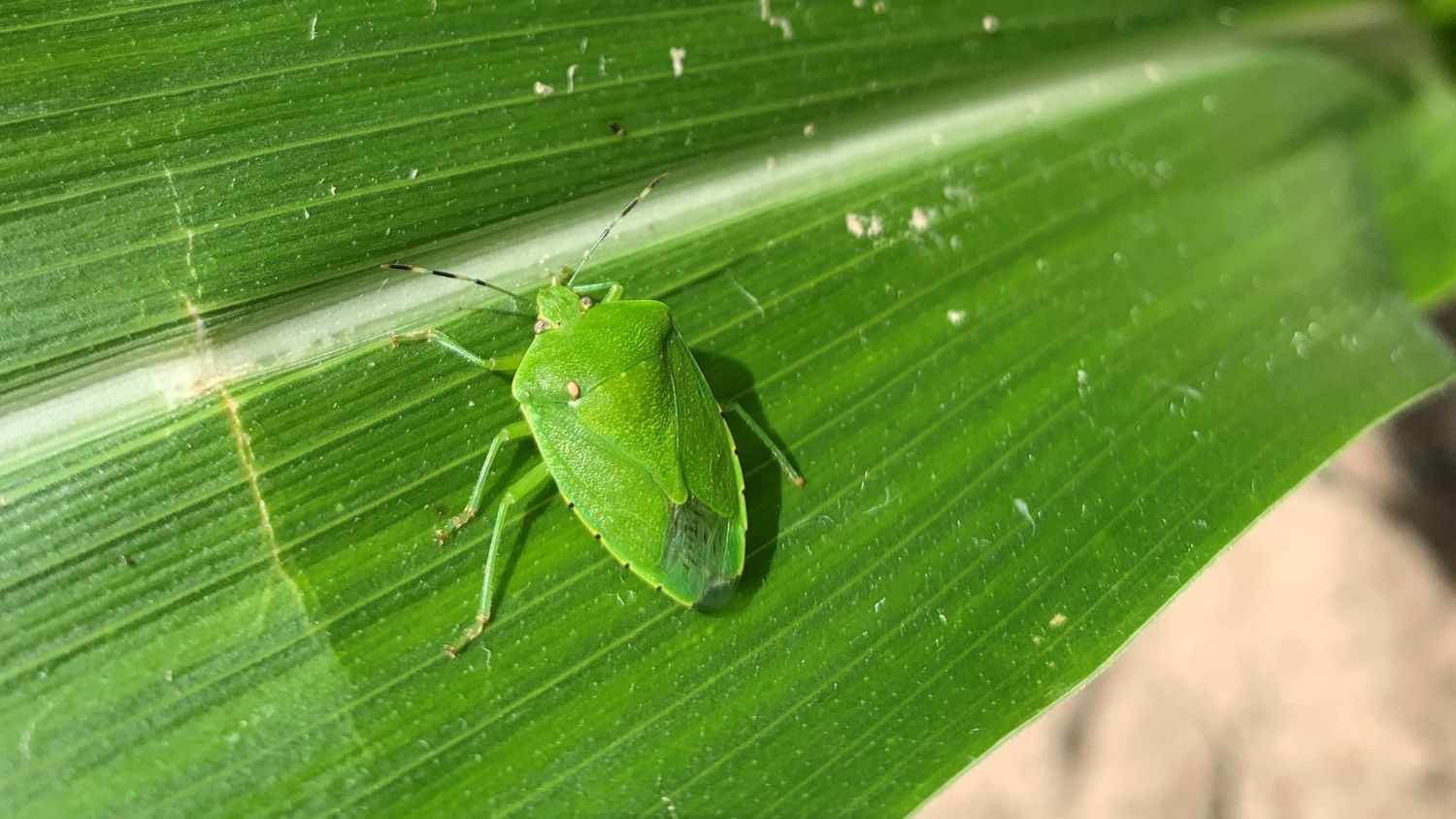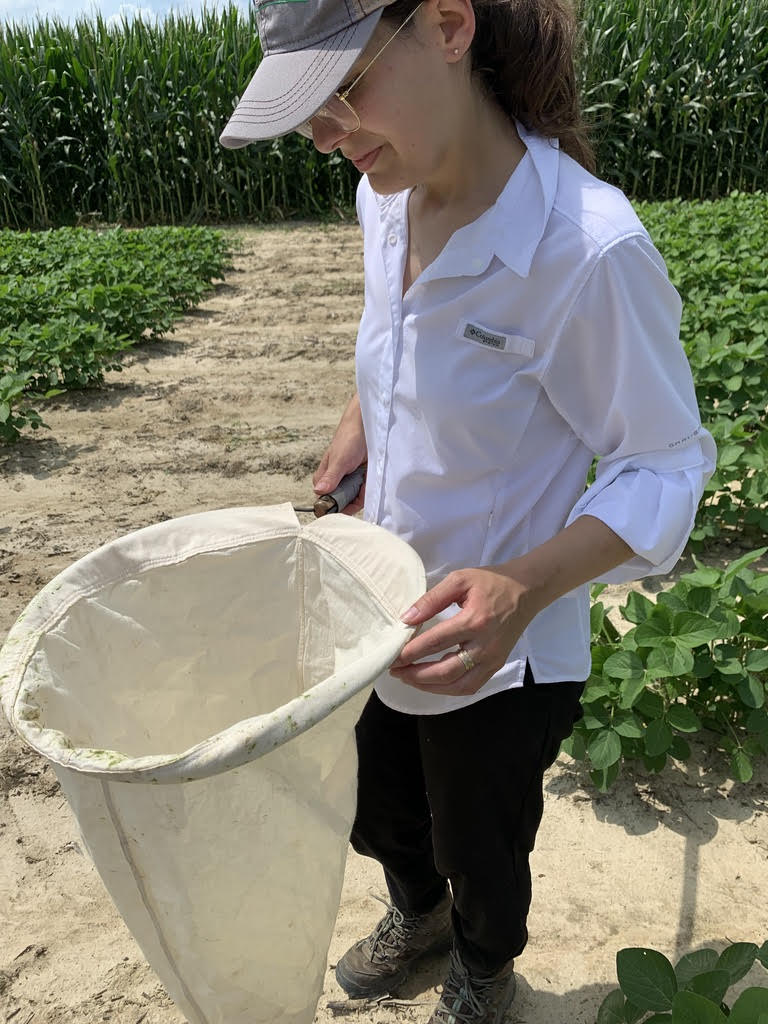
Jam-packed full of crops, North Carolina is a stink bug haven. In any field across the state, odds are high that at least one species of stink bug is on the attack, threatening the crop and farmers’ bottom line.
“If you look at any crop, you might find 10 different species,” says Dominic Reisig, a professor and Extension specialist in entomology and plant pathology at North Carolina State University. “If we looked at that crop over the season, we might find 20 or 25 or 30 different stink bugs.”
Reisig has studied these “pesky little critters” for nearly 15 years. Not only are some stink bug species invasive, but they also devastate crops like corn, cotton, apples, soybeans and wheat across North Carolina.
“Growers have issues with stink bugs, and they would like to manage them better,” Reisig explains. “We’re hoping to give them better predictive power to do that.”
In addition to working directly with growers to combat the pests’ impacts, Reisig also leads a thriving research program with graduate students like Taynara Possebom and Kevin Orta, who are diving deep into the lives of these bugs that stink — both physically and economically — for growers.
Stink Bugs in North Carolina
Identifying the many different species of stink bugs is difficult, even for the experts.
“Sometimes it’s just a change in a dot or something, and they are another species. Or the color of an antenna. It’s complicated,” Possebom explains. “I don’t think they will ever be able to ID all the species we have, and they keep finding new ones all the time.”

Some species have specialized diets, feeding only on certain types of plants, while others feed more generally. The three most common species found in the state’s field crops are the brown stink bug, green stink bug and Southern green stink bug. While the pests are found across the state, some counties have a higher abundance.
“We have an area that I call the stink bug belt, and it’s Johnston, Sampson and Duplin counties,” Reisig says. “For whatever reason, they have a lot of stink bugs there. I think it’s due to crop rotation and field size and things like that.”
Stink bugs munch on a plant using their stylets, which are like hypodermic needles. The bugs then release saliva to liquefy hard plant tissue, often focusing on the developing reproductive portion of the plant. Their famous stench is released from alarm pheromones with two functions: convince predators they’re not a tasty snack and alert other nearby stink bugs of a problem.
Advancing Stink Bug Research
Growers need to know how to effectively scout for stink bugs and then treat them to protect their crops. So far, Reisig and his team have studied aerial control methods, different kinds of insecticides, treatments for weeds that stink bugs feed on and sampling methods.

“Previous students found out that you could sample different parts of the plant throughout the growing season and reduce your scouting time by like 60%, so that was a real big win,” Reisig says.
Now, Orta is trying to better understand why stink bugs are found in certain areas and where they’re overwintering to help narrow down areas for growers to look for the pests, especially in large fields.
“Ultimately, the end goal is to give growers a better idea as to what fields they should be more actively scouting,” explains Orta. “And then hopefully, if you can control the stink bugs when they’re arriving at the start, that usually gives you a lot more control later on as well.”
Possebom, a Brazilian native, developed an interest in stink bugs at the end of her undergraduate degree in agronomy at a college in Brazil.
“My advisor, Dr. Panizzi, works with stink bugs, so he taught me about entomology. I started to like it a lot,” Possebom says.
Reisig adds, “I consider Taynara’s adviser in Brazil one of the world’s stink bug experts, if not the world stink bug expert, so it’s really good to have his expertise through her here.”
This summer, she’ll start her doctoral work with Reisig, focusing on stink bugs following master’s work with corn earworm. Her goal is to create an alert system to catch and monitor stink bugs in the field, starting with soybeans and then moving to corn. She also plans to develop an app that would tell growers how many stink bugs the team catches.
As the team learns more about these stinky pests and technology advances, their mission remains clear.
“We’re hoping that by growers managing the stink bugs better in their crops, we’re going to be able to produce food more efficiently and in a more environmentally friendly way,” Reisig says.
This post was originally published in College of Agriculture and Life Sciences News.